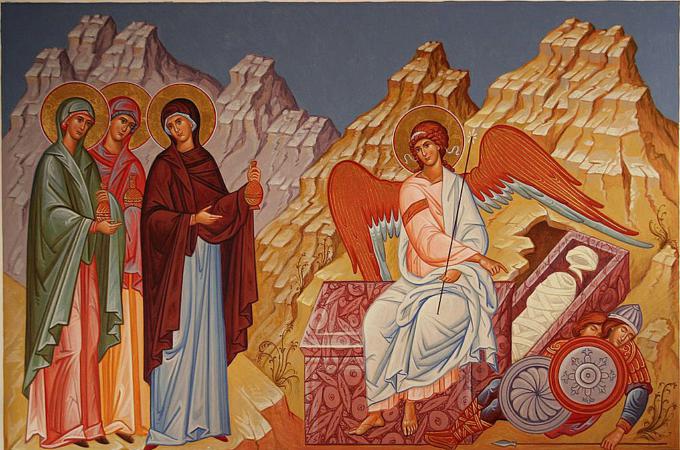Reaction of Jews and Romans to resurrection of Christ
Q. I have always been puzzled by the lack of reaction to Christ's resurrection from Jewish citizens and Roman officials.
It is well-documented that Jesus suffered and died, and his execution was authorized by Roman leaders; but, even at a time of no media coverage, how could Christ's return to life have gone unnoticed by the very officials who had clamored for and authorized his death?
And what happened to the Roman guard who was stationed at the tomb? Why did he not report such an event to his superiors? (Belleville, Illinois)
A. I am happy for this question on the resurrection, because our Christian faith stands or falls on the fact that Jesus rose from the dead. Paul says, "If Christ has not been raised, then empty is our preaching; empty, too, your faith" (1 Cor 15:14).
It is far from true that the resurrection of Jesus went "unnoticed" by civil and religious officials of the day. When those who had been appointed to guard the tomb reported to the chief priests "all that had happened," the chief priests assembled the elders to determine a plan of action.
It was decided to bribe the guards with "a large sum of money"; the guards were directed to tell anyone who asked that "his disciples came by night and stole him while we were asleep." The chief priests also assured the guards that, if the news reached Pilate's ears, "we will satisfy him and keep you out of trouble" (Mt 28:11-15).
That "stolen body hypothesis" never caught on -- first of all, because the dispirited band of Jesus' followers, whose dream had seemingly died with their master, were then huddled together in fear and unlikely to risk going anywhere near the tomb of Christ.
The resurrection of Jesus was destined to cause enduring problems for Roman and Jewish leaders, and it would have been worth their every effort should they have been able to disprove it. (Imagine the effect of being able to produce the body of Christ and parade the "stolen" corpse through the streets of Jerusalem.) But any investigation on the part of civil and religious authorities came up empty.
The rapid spread of Christianity in the first century was fueled by the accounts of more than 500 witnesses to whom Jesus appeared in the 40 days following the resurrection. Writing some 25 years later, Paul says that most of these 500 "are still living" (1 Cor 15:6) -- in effect, challenging deniers, "If you don't believe me, talk to them."
The pyramids of Egypt, Westminster Abbey, Arlington National Cemetery are famous as the burial sites of those renowned by history. The tomb of Jesus, instead, is empty, and Christ's epitaph is carved not in stone but spoken by the angel who greeted the women at the tomb, "He is not here ... he has been raised" ( Lk 24:6).
And yet, for me, the strongest proof of the resurrection comes not from an empty tomb, but from the living witness of Christ's first followers.
Of the Twelve Apostles, only John died of natural causes. The others -- so convinced were they that they had seen Jesus after the resurrection, spoken with him in the upper room, eaten with him on the shore in Galilee -- were willing to die by violence for the truth of that claim: James, son of Alphaeus, by stoning; Peter hung on a cross upside down.
That is a pretty high price to pay if you've made up the story to start with.
- - -
Questions may be sent to Father Kenneth Doyle at askfatherdoyle@gmail.com and 30 Columbia Circle Dr. Albany, New York 12203.
- Father Kenneth Doyle is a columnist for Catholic News Service



















